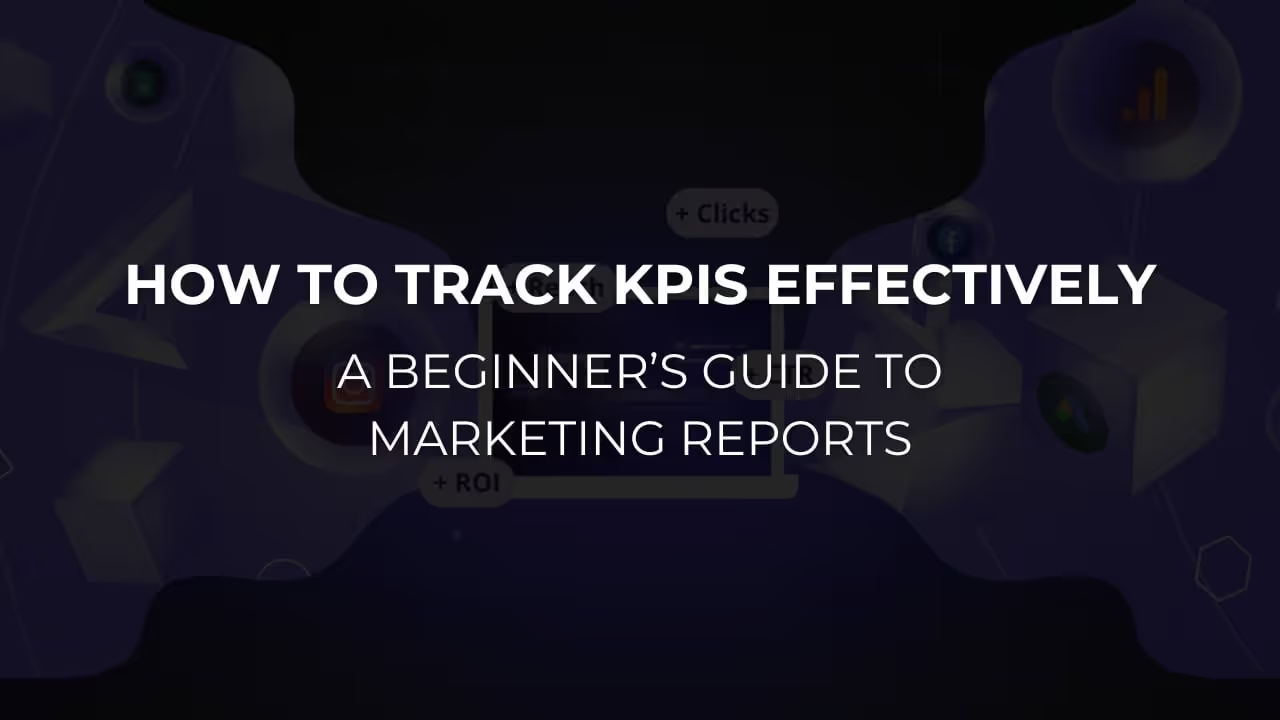Learn to track KPIs with this beginner's guide to marketing reports, featuring actionable steps, top tools, and common pitfalls to avoid.
Tracking your KPIs (Key Performance Indicators) is essential for making data-driven decisions that transform your marketing strategy. But how can you ensure you're tracking the right performance metrics and interpreting them correctly? What tools and steps will help you create meaningful KPI reports? This guide will break it down step by step so you can master marketing reports.
Why Tracking KPIs Matters
Imagine running a marathon without knowing how far you’ve run or how much further you need to go. That’s what marketing feels like without tracking performance metrics. They act as mile markers, helping you measure progress and adjust strategies effectively.
However, not all KPIs are created equal. Tracking the wrong ones can waste time and resources. So, how do you start?
Step 1: Define Your Objectives
Before diving into the numbers, ask yourself: What am I trying to achieve?
Your goals might include:
- Increasing website traffic
- Boosting social media engagement
- Improving email open rates
Each goal determines the KPIs you need. For example:
- To grow website traffic, focus on metrics like page views and bounce rates.
- For social media engagement, monitor likes, shares, and comments.
Pro Tip: Be specific with your objectives. Instead of “increase sales,” try “increase sales by 20% in Q1.”

Step 2: Choose the Right KPIs
Not every metric is useful. Follow this golden rule: Every key metric should align with your objectives.
For example, if you run an e-commerce store:
- To increase sales: track conversion rates, average order value, and customer acquisition cost.
- To improve customer retention: focus on churn rates and repeat purchase rates.
Tracking irrelevant KPIs is like using a thermometer to measure the wind, unhelpful and misleading.
Step 3: Create a Marketing Report
Your performance measure report should be a clear, actionable summary. Here's how to create one:
1. Collect the Data
Use reliable tools to gather insights:
- Google Analytics: Website performance metrics
- Social Media Platforms: Engagement data
- Email Marketing Tools: Open and click-through rates
2. Organize the Information
Avoid overwhelming your audience with endless numbers. Group KPIs into categories that match your objectives:
- Website Performance: Page views, bounce rate
- Social Media Engagement: Likes, shares, comments
- Email Campaigns: Open rates, click-through rates
3. Add Context
Numbers alone don’t tell the full story. For example:
- A spike in website traffic might look good, but a high bounce rate suggests visitors aren’t staying.
- Explain trends, anomalies, and what actions you’ll take based on the data.
Example Insight: A dip in email open rates? Experiment with personalized subject lines to re-engage your audience.

Step 4: Review and Optimize Regularly
Tracking KPIs is an ongoing process. Schedule regular reviews to ensure you're on track:
- Are these key metrics still relevant to your goals?
- What trends are emerging in the data?
- What adjustments can improve performance?
For instance: If customer acquisition costs are rising, explore lower-cost channels like organic social media or SEO.
Common Pitfalls to Avoid
1. Tracking Too Many KPIs
Focus on the metrics that matter. Overloading your report with unnecessary data leads to confusion.
2. Ignoring Qualitative Insights
Numbers show the "what," but customer feedback reveals the "why." Combine both for a holistic view.
3. Neglecting Trends
Spotting patterns over time is more valuable than isolated data points. For example, consistent growth in engagement suggests long-term success.
Tools to Simplify KPI Tracking
Automate and streamline your tracking with these tools:
- Looker Studio: Visualize your marketing data.
- Dataslayer: Integrate data from multiple sources into one report.
- HubSpot: Monitor KPIs across marketing and sales channels.

Start Small and Stay Consistent
Tracking key metrics can feel overwhelming at first. Start with a few key metrics, create a simple report, and build from there. Consistency is key, regular updates to your reports ensure you’re always making data-driven decisions.
By the end of your first report, you might uncover surprising insights about your strategy, ones that could drive major breakthroughs. What will you discover? Start tracking to find out!







